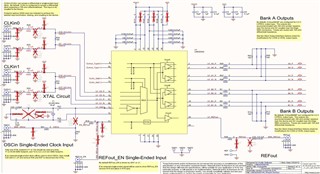Other Parts Discussed in Thread: LMK00306
I want to use the LMK00304 & LMK00306 buffers, but the datasheet doesn’t specifically indicate if the part has internal DC biasing.
I am hoping you can provide clear guidance on connecting this part.
- Is this DC biased internally?
- If not, is there a recommended biasing?
- If AC coupled, LVDS input:
- Is a 100ohm between the differential nets all that is needed?
- Should that 100ohms be on the IC input side of the AC coupling?
Also, the termination Figures 33 & 34 in the datasheet don’t match to what I would expect. I downloaded the eval board schematic for this part, but it looks like it was reworked and doesn’t match the datasheet… actually matches what I would expect.



